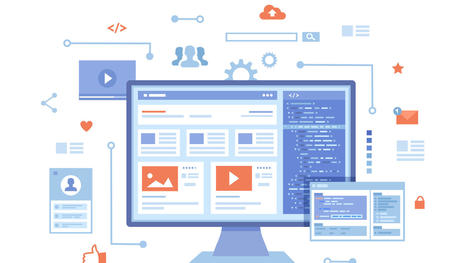
As the coauthor of the leading textbooks in business communication, I'm often asked to describe the technologies that are significantly influencing business communication today. Here is my list.
Artificial Intelligence: AI-based technologies are revolutionizing business communication through chatbots, natural language processing, voice recognition, and predictive analytics, among others.
Cloud Computing: The cloud allows businesses to share data in real-time, improving collaboration and communication. This boosts productivity and makes it easier to work together despite different geographical locations.
Internet of Things (IoT): IoT technology, such as wearable devices, sensors, and smart home appliances, enables businesses to collect, analyze, and use data to improve communication and customer engagement.
Video Conferencing: With tools like Zoom, Google Meet, Skype, and Cisco Webex, video conferencing technology has made remote communication with teams, clients, and partners more efficient and productive.
Mobile Technology: With the widespread availability of mobile devices, business communication is becoming more mobile-friendly, facilitating communication on-the-go.
Social Media: Social media channels like LinkedIn, Twitter, Facebook, and YouTube are increasingly being used for business communication, networking, and advertising.
Instant Messaging: Instant messaging technologies like WhatsApp, WeChat, and Viber enable real-time messaging, document sharing, and group chats, helping in quick and informal communication among team members and clients.
Collaboration Tools: Modern collaboration tools like Slack, Microsoft Teams, and Trello enable teams to work seamlessly on projects regardless of location, simplifying communication and increasing productivity.
Wearable Technology: Wearable devices like smartwatches and smart eyeglasses are being used in business communication to schedule meetings, set reminders, and receive notifications, among other things.
Unified Communications (UC): This is a technology that integrates different communication tools, such as email, instant messaging, voice, and conferencing, into a single platform.
Autonomous Things (AuT): This refers to a category of advanced robotics and AI-driven systems that can perform tasks and make decisions without human intervention. Autonomous things can have a significant impact on business communication in several ways: by making communication faster and more efficient by automating routine tasks such as answering emails, scheduling meetings, and sorting through documents; by interacting with customers more efficiently, providing immediate assistance and faster response times; and by significantly reducing labor costs by automating tasks previously carried out by humans, freeing up staff to focus on more complex, value-added tasks.
Augmented Reality (AR) and Virtual Reality (VR): These are immersive and interactive technologies that allow users to have a more profound and interactive experience, within a virtual or augmented environment.
Gesture-Based Computing: This allows users to interact with devices using hand gestures or body movements to make collaboration easier by enabling more natural and intuitive communication, facilitating remote communication and work, allowing teams to collaborate efficiently from different locations, and improving accessibility for people with disabilities.
Drones: These unmanned aerial vehicles that can be controlled remotely or programmed to fly autonomously to map, inspect, and survey enable businesses to obtain accurate data, improve operations communications, and make informed decisions. Drones can also be used for inventory management, aiding communication in logistics operations and supply chain management, to monitor crop health, weather patterns, and soil, improving communication between farmers and agribusinesses, and to capture aerial footage and photographs, improving real estate marketing communication.
Blockchain: Blockchain technology has the potential to improve communication in supply chain management operations, enabling businesses to track and verify the authenticity of products from origin to delivery.
Voice Recognition: Voice recognition technology is making it possible for users to interact with devices using natural language, improving business communication and making it more intuitive.
Big Data: Big Data analytics technology enables businesses to collect, process, and analyze large volumes of data to make informed business decisions, improving communication for more efficient business operations.
Biometric Authentication: Biometric authentication technology is improving security and authentication for businesses, such as facial recognition technology to access features within video conferencing tools.
5G Networks: The advent of 5G networks is providing faster communication speeds, improving the efficiency of remote communication, and facilitating real-time collaboration.
Modern intranet software refers to the use of internet-based collaborative platforms within an organization to improve internal communication and workflow.
Infographics and Images: Graphic design software such as Adobe Photoshop and Illustrator, Canva, Piktochart, and Infogram makes it easier to create high-quality graphics and design elements, edit and enhance images, develop icons, modify visuals, and create unique layouts for delivering effective messages. Additionally, such software applications often have templates, pre-set designs, and customizable elements, which make it easier for businesses to create high-quality graphics in a time-efficient manner. This software has become increasingly crucial in recent years for businesses, particularly with the rise of social media and visual-based messaging.
Quantum Computing: Although still at its nascent stage, Quantum computing has potential to revolutionize how businesses store, process and analyze data. The computational power delivered by quantum computing can significantly enhance the processing speed required for machine learning, predictive analytics and data simulations that can improve communication and decision-making processes.
WebRTC: WebRTC is a real-time communication technology that allows businesses to communicate directly through web browsers and eliminate the need for third-party communication tools.
These technologies are significantly changing the way businesses approach communication, leading to more efficient, effective, and personalized collaboration and communication within organizations as well as with customers and clients.
Visit my blog at http://blog.businesscommunicationnetwork.com.
Bovee & Thill write the only business communication textbooks that cover artificial intelligence and intelligent technologies.
To teach your students more about artificial intelligence and intelligent technologies, check out Excellence in Business or Business Communication Today at https://lnkd.in/bvxGGmT.



 Your new post is loading...
Your new post is loading...






